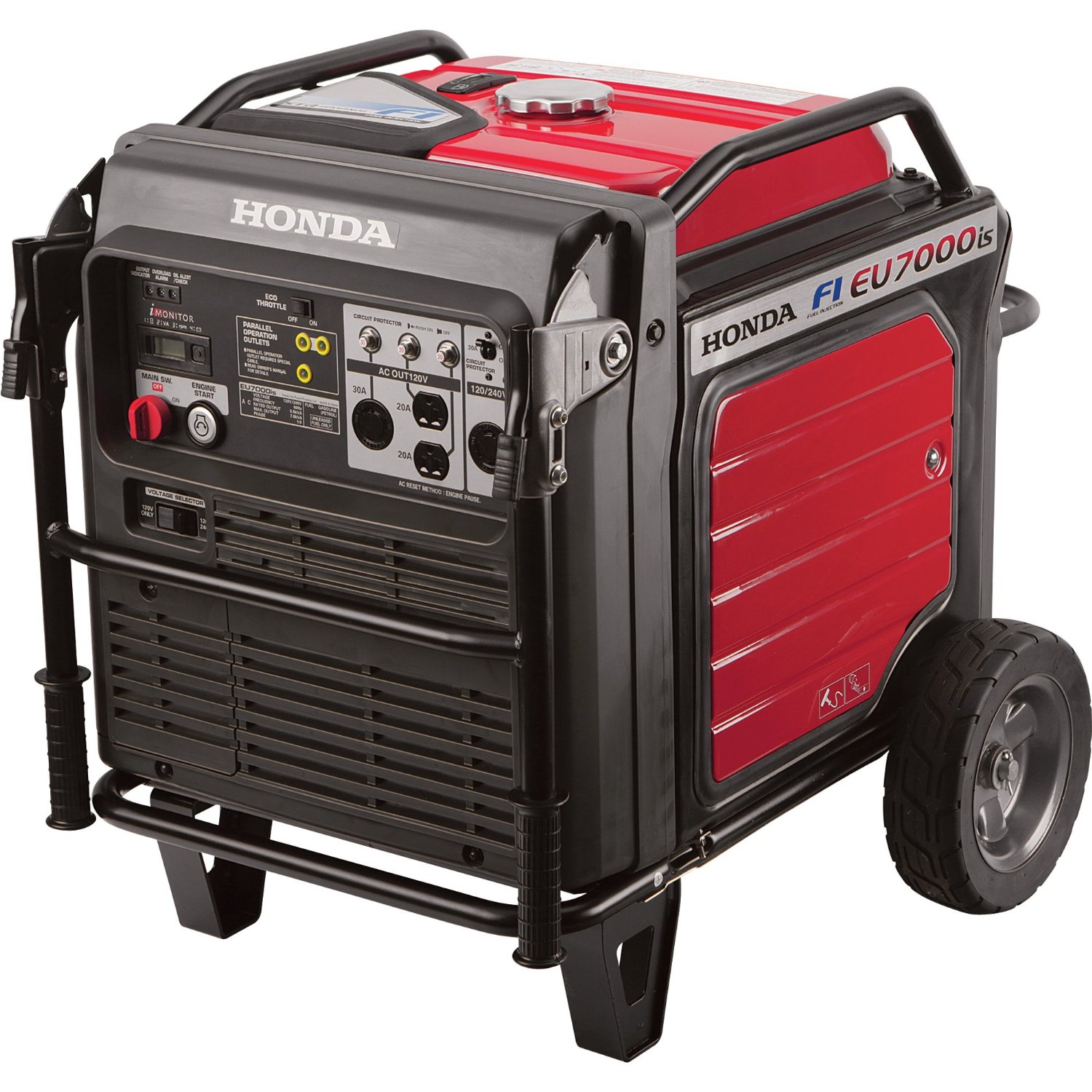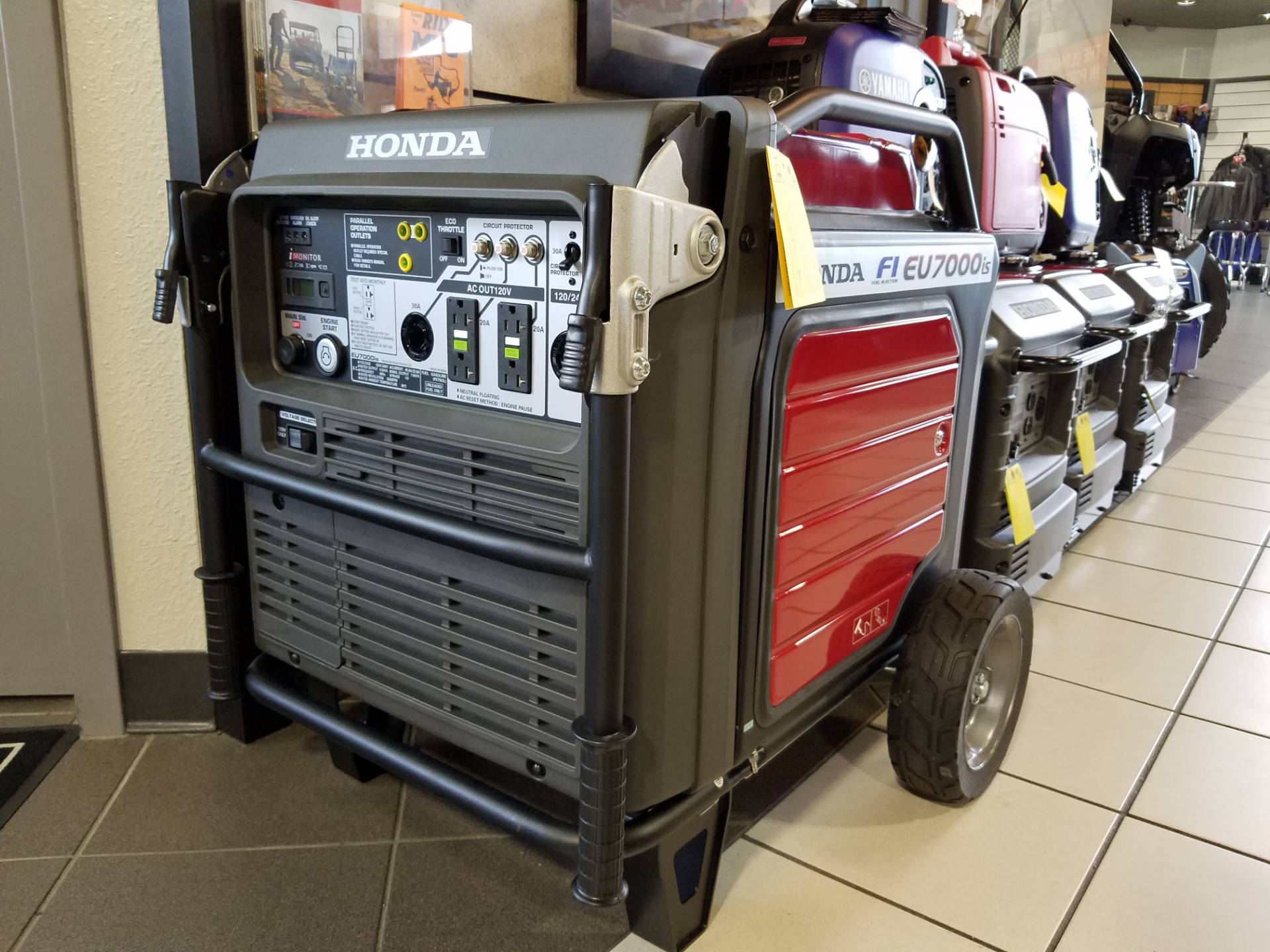A generator is one of the most important things you can have in your toolshed. Whether you’re running tools all day long, or using it to power your home, making sure you have one that will work reliably is essential. When it comes to reliability, finding a generator that is up to the task can be a challenge. Virtually every generator on the market is designed for occasional use. Rarely will they actually work to their rated capacity, and running them every single day can often result in generators that fail after just a few short months. The Honda eu7000is is sold as one of the most reliable generators on the market, and consumers regularly rely on them for mission critical applications.
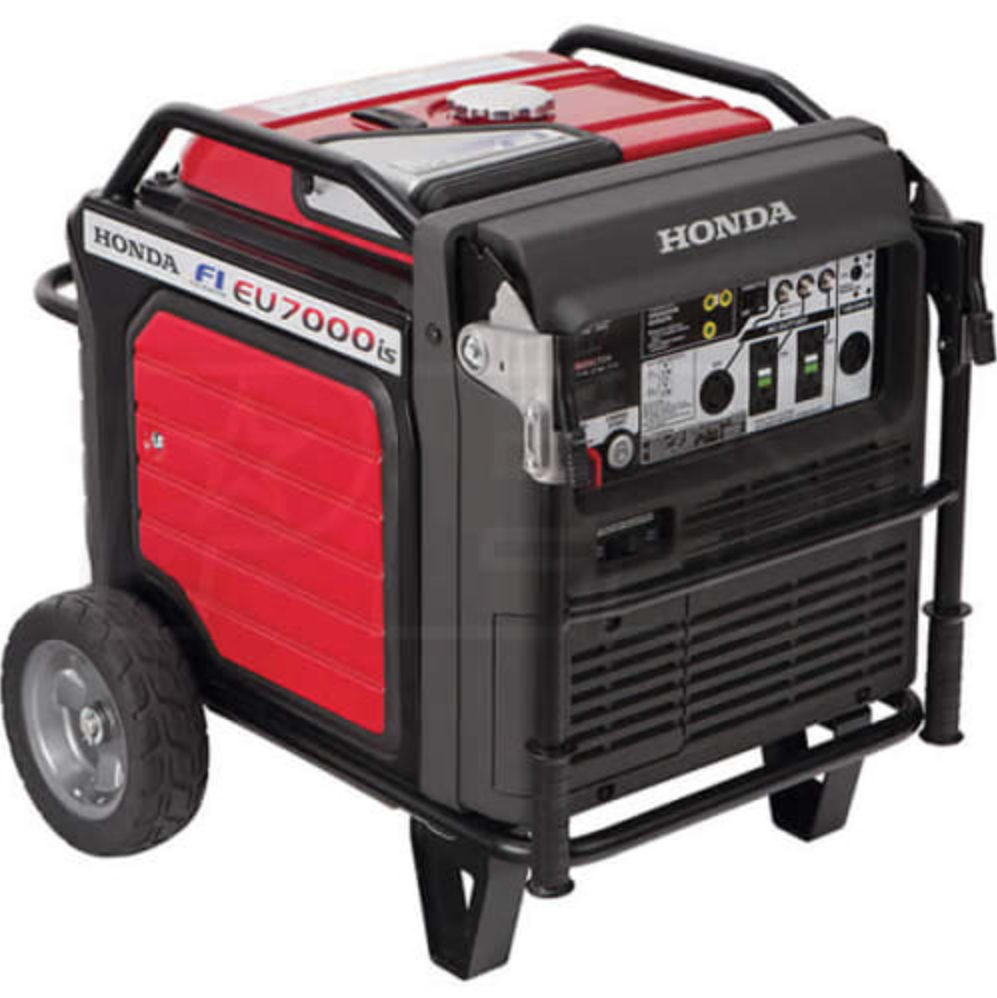
Our Honda EU7000is Review: One of the Best you can Buy in 2020
Honda’s affordable suitcase generators can be found dotting construction sites all over the world. But when you need something with a little more kick, you’ll turn to the euro series. These generators are considered to be top of their class. We’ll be taking a look at the eu7000is. We’ll see if this generator can live up to the legendary standard that Honda has set for themselves.
If you’re looking for something to store in your shed for a rainy day, the Predator Generators might be a great buy. But if this is a tool that you’ll be using day in and day out, Honda is the only brand to consider.
Honda EU7000is Basics
Despite what the name implies, this generator is rated for a steady output of 5500 watts. It is capable of producing 7000 watts, but only in a peak capacity. This means that it will run things like a 7000 watt fridge, air compressor, or any other device that requires a large amount of cranking amps to start, but the power use falls off as it starts running. For things like heaters, power tools that use motors, or your household electronics, you’ll want to use the 5500-watt rating to estimate your capacity for power.
This generator is designed for heavy duty. It can be run virtually every single day without wearing out. Honda has included several emergency shutoff features that prevent the most common types of damage that can occur when generators are neglected.
How it Stacks Up
Here are some popular alternatives to this generator. It’s definitely one of the most expensive options, but as you can see it’s performance is improved in many areas
Layout

the Honda eu7000is is designed to be compact, which is surprising considering it’s capacity. They put the controls and case directly over the motor, which makes it a little skinner and a little taller than most generators. We found that it was deceptively heavy given the side. Fortunately, it’s got two-fold down handles and high quality wheels on the bottom. These wheels are fully rubberized, which gives the generator better traction and mobility on tough surfaces. It did take a bit of work, but we had no problem hauling it upstairs or across a gravel driveway.
One of the nice things about the handles is that they fold down. This keeps the generator compact when you’re not hauling it around. Generally, we’re not a huge fan of fold down handles as manufacturers tend to cheap out on them. Since this is such a common point of failure, Honda used heavy duty metal brackets. They click firmly into place, and we don’t have any concerns about them wearing out.
One of the nice things about the handle is that they are quite large. Since they’re sticking out on most generators, they tend to keep them quite small so the generator remains compact. But with these ones, you’ve got quite a large lever that help you to lift it easily, despite the large weight.
The Honda eu7000is keeps all the controls on one easy panel. It’s ideal to have everything on one side like this because you can tuck it into a corner and just leave one panel exposed.
Controls & Connectivity
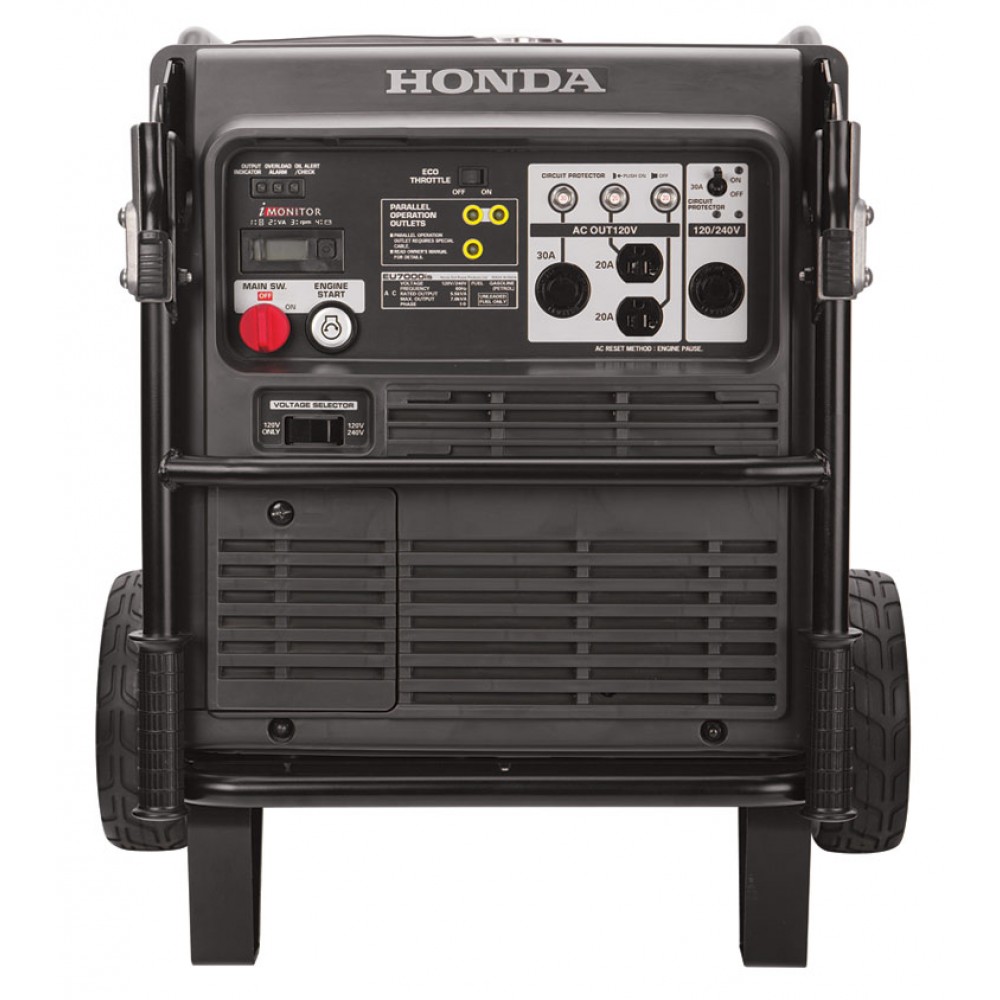
If you’re sick on yanking a stubborn ripcord, waiting for your generator to start, you’ll be happy with the Honda eu7000is. It’s got a completely electric starter, so all you have to do is turn the shutoff switch to the “on” position and push the start button. Although our generator was brand new, we found that it started with ease every time. It usually only took a single crank to get it fired up.
Just above the starting controls you’ve got a compact LCD display that gives you some information about how the generator is running. You can view the current output, the voltage, the RPM, or the current power use. This is surprisingly handy to have. Even 120V generators can range from 110 to 120V, and often manufacturers power ratings for equipment are incorrect. This lets you know exactly how much of a load you’re putting on the generator, so you can decide whether you can connect more equipment or not.
On the right of the generators control panel you’ll find all of the connectivity options. You have two standard 110v plugs, just like you’d use in a house. To the right of them is a separate 110v connector, this one using an GFCI connector. These are locking ground fault disconnect switches. They’re commonly used in explosive environments, or places where you want to protect equipment from ground faults. This is extremely important since generators are not commonly grounded, so these adapters can help to prevent equipment damage and sparks.
On the other side you’ll see another similar looking connector. This connector can operate on both 120V and 240V. You swap the power over by flipping the switch on the bottom left. This allows you to run equipment like an electric oven, a freezer, or any other 240v device you have laying around.
Fuel
This generator runs on gas. We’d like to see a dual fuel version, but unfortunately that isn’t something that’s available on the ecofriendly generators as of yet. The benefit to this single fuel system is that the generator can produce a lot of power off very little fuel. The easiest way to improve your economy is to use the eco-throttle switch. This forces the generator to downregulate its fuel consumption. It does drop the power output a lot. In eco mode we were seeing 3500 to 4000 RMS watts. But the fuel consumption was cut in half. This is extremely handy to have when you’re not always using the generator to its maximum potential. We found that we were running it in eco mode almost all of the time. When we needed that extra boost, we could just flip the switch to improve our power output.
Power Quality
One of the problems with more inexpensive generators is that the power isn’t always great. Under load, the sine wave of AC power tends to distort. But the Honda eu7000is is capable of producing a very clean sine wave. The total harmonic distortion is a shocking 4%. For reference, the grid power in New York is commonly rated at 6%. This makes it ideal for anyone who’s trying to wire in a backup generator for a home, or run some kind of high end electronics that require a clean sine wave, the Honda eu7000is is a clear winner.
Even under load, we noticed that the frequency and voltage of the power rarely dropped. If it wasn’t for the power regulator, we’d suspect that you could get much more than the rated output out of this generator. Most start to crack at around 70% capacity, but even when pushing this generator to the limit we saw consistently high voltages. That being said, when you can push this much power it’s important to make sure everything is connected properly. You’ll want to get a heavy duty extension cord if you have any intention in running this generator near it’s limit. With a cord not rated for the appropriate capacity, you could cause damage to it.
Sound
The engine itself is mounted on rubber feet, and there is an advanced muffler system that goes well beyond what we’re used to seeing. The end result is that this generator is almost eerily quiet. From a distance of 23 feet, it was almost inaudible. Even when working in close proximity, we found that the noise wasn’t annoying. You’d be able to carry on a standard conversation right next to it, even if it was running at near full capacity. Even if this isn’t an important feature to you, it will certainly be appreciated by bystanders.
Safety
When abused, any generator can fail. The most common reason for failure is poor oil quality or low oil pressure. This generator has a sensor which is conveniently placed right next to the main inlet. If the oil pressure ever drops beyond an acceptable level, the generator will turn itself off.
There are also emergency shutoff sensors for overload and current protection. There are three LED lights on the main panel. If your generator ever shuts off for no reason, the appropriate LED will be illuminated.
The chances of you overloading the generator with a single device are slim. Each output is fused at 20 or 30 amps depending on the connector. When you blow a breaker, the generator doesn’t shut off. While the Honda eu7000is still running, you can easily walk over to it and push the breaker back in.
The only potentially unfused outlet is the 240V. This one is on a switch. If you like, you can fuse it at 30 amps. But if you’re running your home panel, you can disable this switch and use the main breaker.
Update:
One of our readers sent us this question, so we thought we’d clarify that final point:
Aloha!
I’ve been reading with great interest your write up on the Honda eu7000is – thanks for doing such a thorough review! I am considering using this generator as a home back up this winter. I have a question about something you mention in the review:
“The only potentially unfused outlet is the 240V. This one is on a switch. If you like, you can fuse it at 30 amps. But if you’re running your home panel, you can disable this switch and use the main breaker.”
does this mean that if have the house panel wired for a backup generator I can potentially pull more than 30 amps out of the far right plug on the generator if the switch is in the off position? I must admit that I’m puzzled by the fact that the generator is rated to output 5500W (45.8/22.9A) – but the plugs are only 30A. I have a single backup power inlet plug on my home, and I’d like to maximize the amps going into it (my main panel has a backup 50A outlet leading to a 120A breaker). I’d appreciate any help you can give me – and thanks again for the fantastic write up!
Henrik
To answer this question:
How Much Power Can Each Outlet Put Out?
1) the position of the voltage selector switch
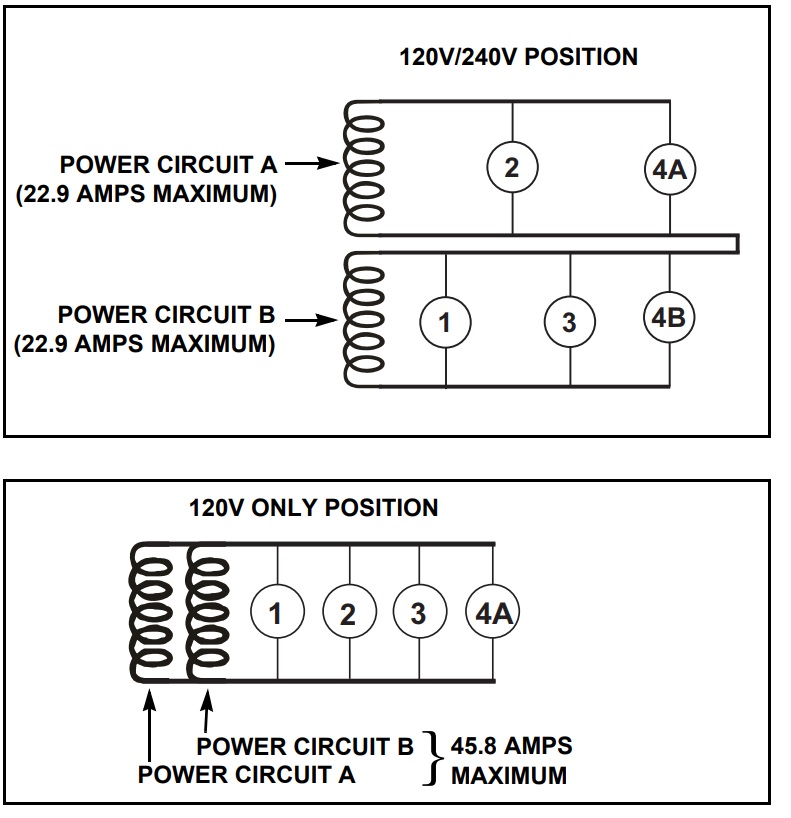 the power circuits operate in series, like two separate generators. Each circuit supplies up to 22.9 amps maximum to specific receptacles as shown in the graphic. Neither power circuit can supply power to the other power circuit’s receptacles. It is important, therefore, to balance the load on both power circuits. When the voltage selector switch is in the 120V ONLY position, the power circuits operate in parallel, sharing the total load connected to receptacles 1, 2, 3, and terminal 4A of receptacle 4. Since both power circuits share the total load, there is no need to balance the load”
the power circuits operate in series, like two separate generators. Each circuit supplies up to 22.9 amps maximum to specific receptacles as shown in the graphic. Neither power circuit can supply power to the other power circuit’s receptacles. It is important, therefore, to balance the load on both power circuits. When the voltage selector switch is in the 120V ONLY position, the power circuits operate in parallel, sharing the total load connected to receptacles 1, 2, 3, and terminal 4A of receptacle 4. Since both power circuits share the total load, there is no need to balance the load”2) The rating of the outlet
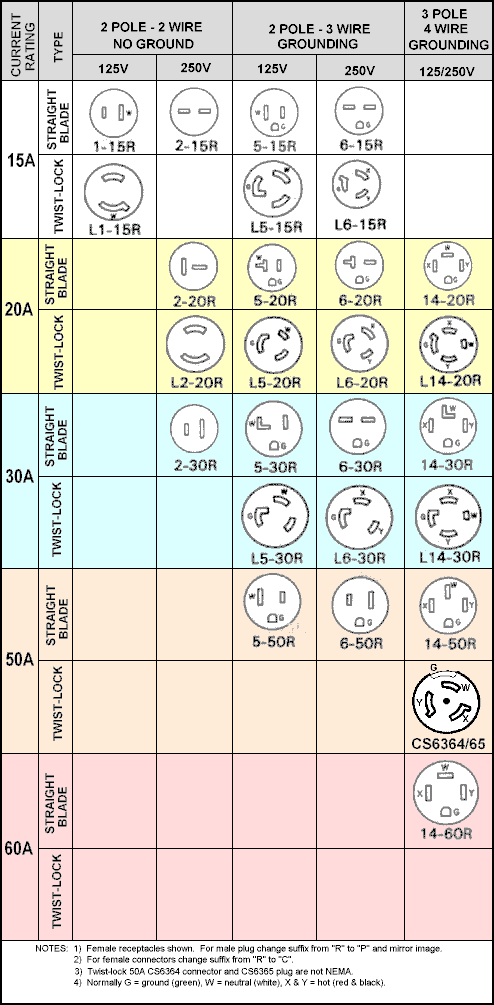
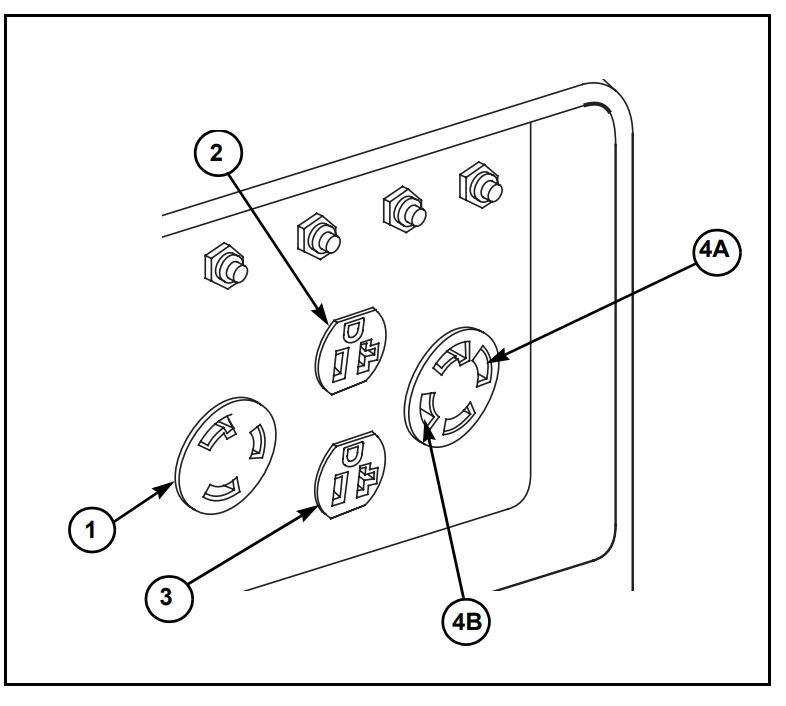
If you refer to the NEMA outlet chart I posted earlier, you’ll notice that the only locking connector rated for 50 amps requires 3 pole / 4 wire grounding wiring. With the EU7000is, the third pole is disabled in 120V mode. Based on the way the generator is wired, there is no way to use that plug and there is no approved outlet for 50 amps across 2 poles.
First choice is something like this:
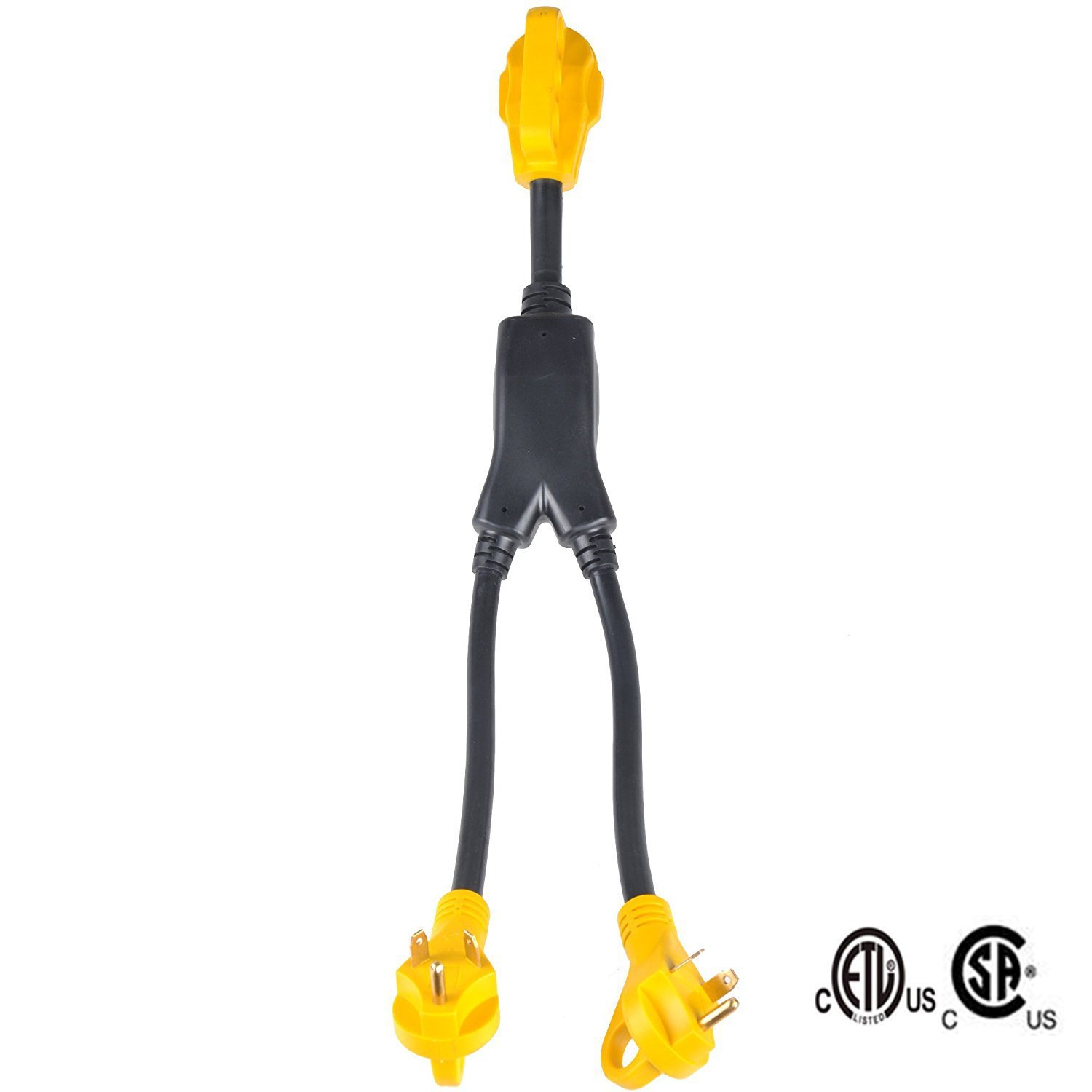
Remote Start
We got another comment from one of our readers pointing out a flaw that we hadn’t thought of:
A bad thing about Honda EU7000i is when a surge shuts down the generator output and the generator is still running (doing nothing). How about a wireless unit that alerts the user to thus?
This is correct. When you blow a fuse, all power output on that outlet is ceased. However, the generator continues to run and burns up gas. If you don’t keep a watchful eye, this could cause problems for people using the generator to charge batteries or other background tasks.
You can get a remote starting kit for the Honda EU7000is, but this doesn’t alert you if the generator shuts down. For now, this is just something to keep in mind if you think that you’ll be exceeding the limits.
Final Verdict
If you can afford it, the Honda eu7000is is one of the best generators on the market. It’s got world class reliability, whisper quiet operation, an easy to use control panel, and enough power to run an entire house. If you find that you’re running a generator all the time, it’s extreme durability and impressive fuel economy will save you enough money that it will more than pay for itself in the long run.
That being said, this generator isn’t for everyone. If you’re only looking for something suitable for occasional use, you can save a lot of money by going with something like the predator generator. Those models are much cheaper, and unless you are running it regularly you won’t see much use from the Honda.
But for those of you that rely on a generator, the Honda eu7000is is the latest version in a long lineup of high quality generators for consumers who demand the best.



